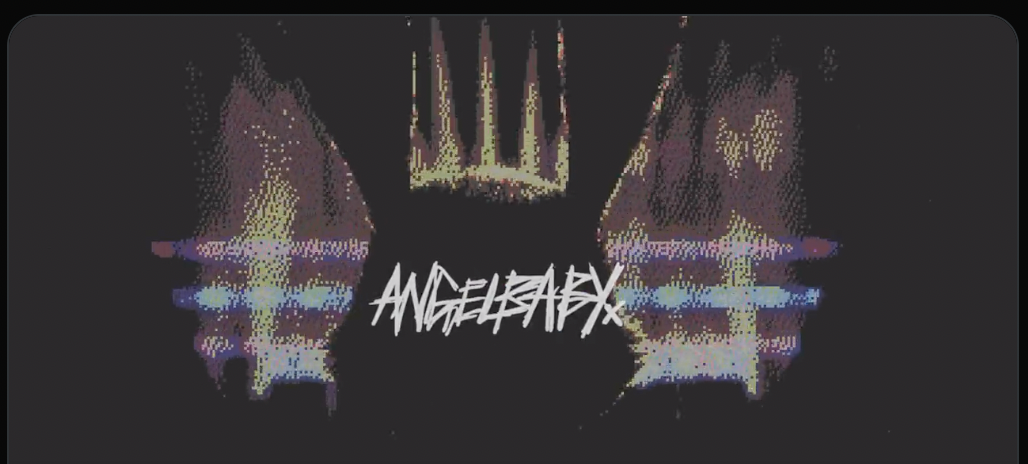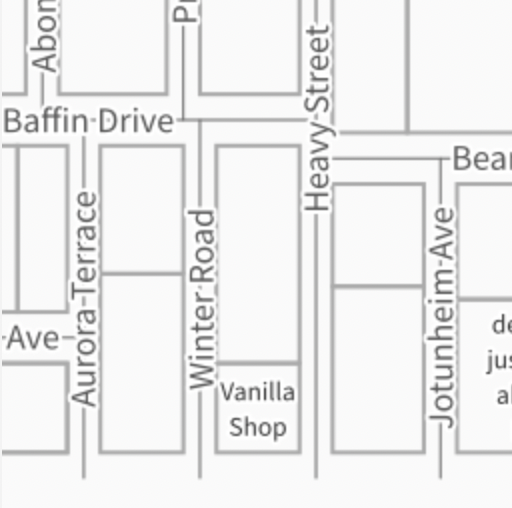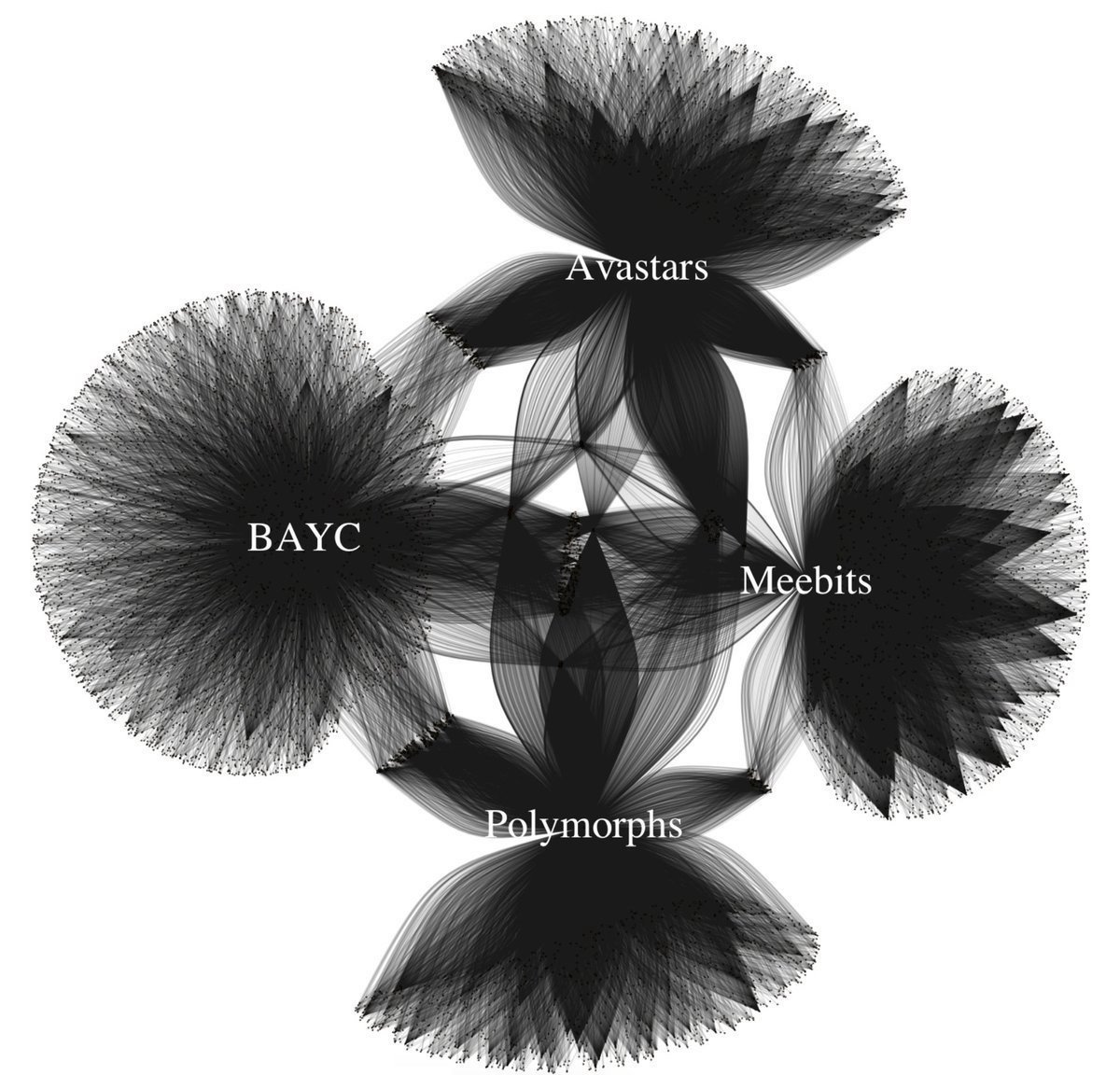Building Expansive NFT Universes: CC0, Fidelity, & On-Chain Bundling
NFT creative universes are undergoing an exciting phase of wild experimentation: emphasising free IP, new economics, and remixing. As these universes develop, there’s three key components that can help foster success:
1) Permissive licensing, primarily in the form of Creative Commons Zero (CC0). This allows creative remixing with upsides for both the original and derivative.
2) An emergent focus on low fidelity + metadata that ignites the imagination. Lower fidelity invites remixing into higher resolution interpretations.
3) By categorizing metadata into on-chain bags, projects can direct expansion through bundling.
It makes me very excited, because all these components combine to form wholly new kinds of media franchises that’s going to be hard to ignore. It will allow free, abundant IP that also builds wealth for all the collaborators. Let’s dive into all 3 parts.
1 Legitimacy & the CC0 NFT Flywheel
An NFT references a canonical interpretation: eg, regularly, a link to a file or some on-chain image. Owning the NFT is separate from the copyright of the referenced image. In many cases, copyright is retained by the original creator regardless of what happens to the NFT. This usually restricts the NFT holder to only being able to enjoy the ownership of the reference. The owner is not allowed to use the referenced image in any other way, particularly not commercially.
The value is derived from what the NFT represents and the immutable timestamping engine of the blockchain helps to legitimise a specific reference. There are various ‘signals’ that are codified such that it makes it desirable to own even though the token is separate from the reference.
While the image itself is (usually) immutably codified and adds a large proportion of desirability, it’s also very important as to who “signed off” on the NFT. Much of the value is derived because it is a blessing of legitimacy through timestamped cryptographic signatures from specific people: it’s all about “the signature”. It’s a focal point engine that keeps and embeds social relationships through time towards cultural objects.
This entire engine of legitimacy building towards ownership of signed cultural objects also empowers derivative works.
Historically, derivative work creators would usually have to be content with 1) not being able to commercialise the derivative IP, and 2) not being able to own any upside they send upstream (derivative works send attention upstream into potential revenue streams for the original creator). For the original creator, allowing derivatives also means they are okay with losing control over both potential revenue and creative control. Poor derivative works can also cause negative outcomes for the original creator.
These incentives still exist for derivative works using NFTs with traditional copyright, but, the alignment becomes stronger if the original creators allows for free commercialisation of the IP. With NFTs, there’s a stronger value alignment for positive incentives because: the derivative creator can now earn upside not just from their derivative work, but also from the success they send upstream to the original. If the derivative creator owns NFTs of the original work, they can earn twice. Comparatively, this would be like the ability to earn from the sales of Harry Potter wands if you successfully create a derivative Harry Potter story. In some instances, it’s currently possible (eg, if you own Disney stock and create a good Star Wars spin-off). This, of course, would only be practically possible if you could create spin-offs at all. Counterintuitively, by allowing more ready access to participate financially, creative commons zero becomes more lucrative.
The original creator would prefer this too, because 1) subsequent secondary sales can earn them royalties, capturing the increase of the value sent upstream, and 2) they get more attention and clout that could be harnessed for future works & sales (originals or derivatives).
The flywheel is as follows:
1) Person A creates CC0 content.
2) Sell NFT #1 of CC0 content to person B.
3) Person B decides to create derivative CC0 content.
4) Person B sells derivative NFT #2 of CC0 content to person C.
5) Person C loves the derivative work a lot and decides to buy original NFT #1.
6) Thus: Person A gets royalty from sale. Person B gets revenue from sale of derivative work + sale of original NFT. Person C is a happy collector.
7) Person C decides to create derivative work of NFT #2 or NFT #1… (rinse, repeat).
You can see this pattern blossom in various NFT projects. It’s still fairly early days for this model, but many projects have utilised this cross-pollination: a rising tide lifting all boats into a free IP remixing theme park wonderland.
Here’s some examples:
Jenkins The Valet
In this project, a team took a Bored Ape, and classed them to become a storyteller about the stories that take place in the yacht club. Notably, they sold their own set of “keys” NFTs in order to be able to participate in the project.
Yuga Labs’ upcoming Otherside
Yuga Labs (creators behind Bored Ape Yacht Club), upcoming virtual world has a scene showcasing the likelihood that many different NFT universes would be able to “co-exist” in it.
From Left-back to Front-Right: Nouns, Meebits, World of Women, Cool Cats, Mutant Ape Yacht Club, CrypToadz, CryptoPunks.
You can see for example, the IP agreement from CrypToadz: “To the extent possible under law, Gremplin has waived all copyright and related or neighboring rights to CrypToadz by Gremplin.”
Renegade Comics
Renegade Comics is an example of taking IP from the universe and making a comic about it. In this case, it’s from Chain Runners.
Blitwear
Inspired by the graphics from Blitmaps, this projects expands on it, making digital fashion that could also be redeemed for physical garments.
Nouns Center
There’s a LOT of these derivatives and cataloguing them all here is impossible. For NounsDAO, there’s even a website that catalogues all its derivatives. https://nouns.center/projects.
What’s interesting with some of these is that there is an emergent trend where the original/canonical reference has low fidelity: it’s pixelated and/or simplistic. This might be due to copying early prominent examples like pixelated CryptoPunks, but there is emergent value being forwarded to projects that have low fidelity. I also believe the future of successful projects will likely retain low fidelity and/or even go further: the canonical implementations is just going to be metadata.
2 Expansion through Fidelity & Metadata
When you were a kid, a branch could be anything: a sword, a gun, or a wand. A plastic toy sword, however, could never really be a gun. Sometimes, the lower the fidelity of the object, the more it allows for remixing and reinterpretations. There’s a reason why higher fidelity doesn’t always lead to better graphics.
Your 4k HDTV in 2022.
Your CRT TV from the 90s.
To invite play and expansion, it’s easier to do so when the canonical reference is open to interpretation. It’s easier to expand a tree branch with your imagination than a higher fidelity toy.
Take a look at Chainrunners for example. One of their own expansion packs aims to increase fidelity from their canonical reference. https://www.chainrunners.xyz/xr
You can also see in this concept art derivative from HyperLoot that adds higher resolutions to Nouns, CrypToadz, and Blitnauts.
This, in many ways, are what NFT gaming could look like. There’s been legitimate critique from the gaming industry that you can’t just re-use NFTs through games, because that’s just not how games work. That’s true, but it doesn’t matter, because with 1) CC0, and 2) lower fidelity at the base level, the use of the NFT in gaming is all about about merely reinterpreting the canonical image/file. Some projects just merely give you access to additional files that could be used in games, but even then, it’s not even necessary. Chainrunners XR gives you files, Meebits do, and so does Forgotten Runes. But, the image above shows that a remixed work doesn’t need to rely on the canonical file/image if it’s CC0.
The value comes from reinterpretation, and the reinterpration is easier if the canonical reference is low fidelity. It’s not absurd to imagine that future NFT projects will simple make their canonical release just their traits and the first derivative being some visual accompaniment. Now, where there is usually only 1 starting collection, there would be 2.
The only outstanding issue, is the issue of losing creative control. Thus, this flywheel isn’t apt for all creative works. Some projects are willing to let go of creative control to the chaos, some aren’t. You can still see this tension in some permissively licensed projects like Fluf World (that isn’t CC0).
AngelBaby is a derivative character from Fluf World. There’s many variations of these NFTs being used in music projects: creating virtual bands/artists.
This is from Fluf World’s IP agreement:
You will own non-exclusive commercial rights to your FLUF and the underlying art of that specific character so long as you continue to own and control the related NFT, as outlined in our License Agreement. You will not own any rights to utilize the FLUF World brand or any of its registered trademarks, including the FLUF logo, without expressed written permission from the NF Labs team. Ownership of the NFT is mediated entirely by our smart contract. At no point can we seize, freeze, or otherwise modify the ownership of any NFT.
You may assign some of these rights to other commercial projects, but any future transfer of your NFT will be subject to those rights that you have already assigned. You can put your FLUF World character on clothing and merchandise, include them in video games and video projects, and generally do whatever you want with your FLUF. You cannot use the name “FLUF” on any commercial product, unless connected directly to the name or the number of your FLUF signifying the NFT you own. You agree not to use your FLUF in any project or derivative work that involves hate speech, racism, pornography, or any illegal content.
This is fairly reasonable. A successful derivative full of hate speech can affect the entire project and ALL its subsequent derivatives. You can’t really avoid it, but, one way to ensure that projects see derivatives that are truly positive and expansive to the universe is to incentivize it with the style of the project. Most of the projects I’ve detailed thus far are primarily avatar/identity projects. By its nature it doesn’t necessarily invite expansion. Merely being CC0 and low fidelity makes it easier, but simply leaving it as-is is also… just fine. You can enjoy a Chain Runner without being invited to expand it. What does it invite you to do, though? Currently, many of these projects are social clubs and want to expand into metaverse content (eg, all of them playing together in a virtual world like Yuga Labs’ Otherside). It thus invites you to don this identity, set it as your profile pic on Twitter and Discord and play.
BUT. Avatars are only one direction that invites specific kinds of expansion. There’s still large categories of expansion that’s wholly unexplored. I think it’s necessary that avatars were first, but from here on out, it will expand. A key component that plays into the metadata-first approach is to bring the metadata layer on-chain. Currently, for many projects, the metadata exists separately. It’s an API for expansion, but only in a web2.0 way. It doesn’t exist in the same substrates. A world of NFTs whose metadata exists on the same substrate can allow for more broad cross-pollination and allow for the directing of expansion in specific directions.
One such variation (beyond) avatars, is the bag. Let’s finally look at Loot and Dopewars to showcase how it uses all these components to build expansive NFT universes through CC0, low fidelity, and directing expansion into specific areas.
3 The Bag: Directing Expansion
Loot took the current PFP craze and made it pure metadata. It’s all about the traits. The canonical reference is just a bag of text. “Stats, images, and other functionality are intentionally omitted for others to interpret.”
It directs expansion by not specifically having a canonical image. People have created their own interpretations.
Loot Character allows you to mint an accompanying NFT image.
Hyperloot is an up an coming interpretation.
Here’s where it gets more interesting besides just consuming the contents of the “bag” into a direct representation. Because the traits are on-chain, other NFT projects can use it for their own derivatives: these projects are only possible because the metadata is on-chain.
Genesis Project is such an example:
Each bag has a minimum of one item that has a suffix with “of” in front of it. Collectors discovered that the Loot bags were shuffled from these original or “genesis” adventurers. So, Genesis project is a collecting game where the goal is to distill these Loot bags into ‘mana’ based on these “of” suffixes. It’s now separate from the original bags and if combined correctly, you can summon and recreate a new bag that denotes these Genesis adventurers.
Because of this composability it also not invited direct derivatives, but also adjacent derivatives. Loot Realms is an example.
Here’s a perfect example as well also about utilising lower fidelity for expansion.
It’s all layered and this interplay works by playing at the level of the metadata. Expansion is directed by on-chain bundling.
Another example of how this expansion work by bringing metadata on-chain and into bags is: Dopewars. Its canonical NFT is also just a bag of text.
In Dope Wars, the canonical NFT can be consumed to distill into separate gear NFTs.
This in turn can be recombined into a Hustler.
Loot style bags are a great example of how this can be all combined to create expansive universes: CC0 IP, low fidelity canonical NFTs, and directing expansion through bundled bags and on-chain metadata.
Even in the NFT space, the idea of a metaverse where there is one canonical representation is out of date. Almost all of them combine the NFT with their canonical interpretation. eg, the NFT of a Cryptovoxels plot looks like this.
Address: 7 Heavy Street. https://opensea.io/assets/0x79986af15539de2db9a5086382daeda917a9cf0c/6259
It’s metadata shows you the traits of the plot.
BUT. It doesn’t show you what’s in it and secondly, it links to off-chain metadata. You can’t consume this information on-chain. To me, the future of a “place” for NFT universes will primarily be a consumable, on-chain bag, first. It will probably look more like Loot Realms than Cryptovoxels. The interpretation of the experience will rely on specific UIs (or “viewers”). The world will primarily be metadata and the rest will be interpretations. If there’s any meat to the term “metaverse” these days, in truth, it will be a pluriverse of metadata.
It might also not be long where if a standard emerges, we see custom rules to how objects are parsed into bags and how they can mixed and remixed.
The bag is an example of directing expansion by categorization, but there’s likely more categories here that we have not explored yet. The true metadata “plot” would be one: a way to add/build/expand on a piece of land. There are ways to combine and recombine specific kinds of NFTs here that’s still unexplored. The “book” might also be an interesting metadata bundle. Primarily, as time goes on and more metadata moves on-chain, we can track and bundle events into specific “books”. There could also be new kinds of “books”: stories that could be told through on-chain events.
Takens Theorem is notorious for highlighting and connecting on-chain events into NFTs.
In their project, “the mesh”, your NFT changes based on what historical projects you own (yay shared substrate!), and based on how it relates to all other NFT holders in the mesh. Posting to this artistic networks also changes everyone’s NFTs.
This is a start. In this case it’s an art project: a visualisation of the shared, public substrate we are all timestamped into. What does this look as an expansive storytelling universe: avatars being linked back to their old pasts and each other? Tenet, in the blockchain? 😅
Questions & Conclusion
My assessments could be incorrect. Does lower fidelity really matter? Prominent NFT collections (like BAYC) don’t have low fidelity pictures and don’t thrive on bagging on-chain metadata. But, it is permissive. So, some variations of these three components might mean that it helps, but I think it’s more interesting to see what becomes newly possible from here. Loot is the best proto example, but I don’t think it would be the last. Is CC0 long-term the most viable or is this flywheel not as strong as we anticipate? To what extent can on-chain metadata and bundling really allow for interesting expansions?
These questions will be tested in time, but at the very least it provides fertile ground for emergent culture, and that I would always bet on. That’s always been what’s so exciting: what becomes possible with a timestamped engine with open APIs and free culture? At the very least, we’ll have the friends we made along the way embedded into it, long after we’ve gone.






















